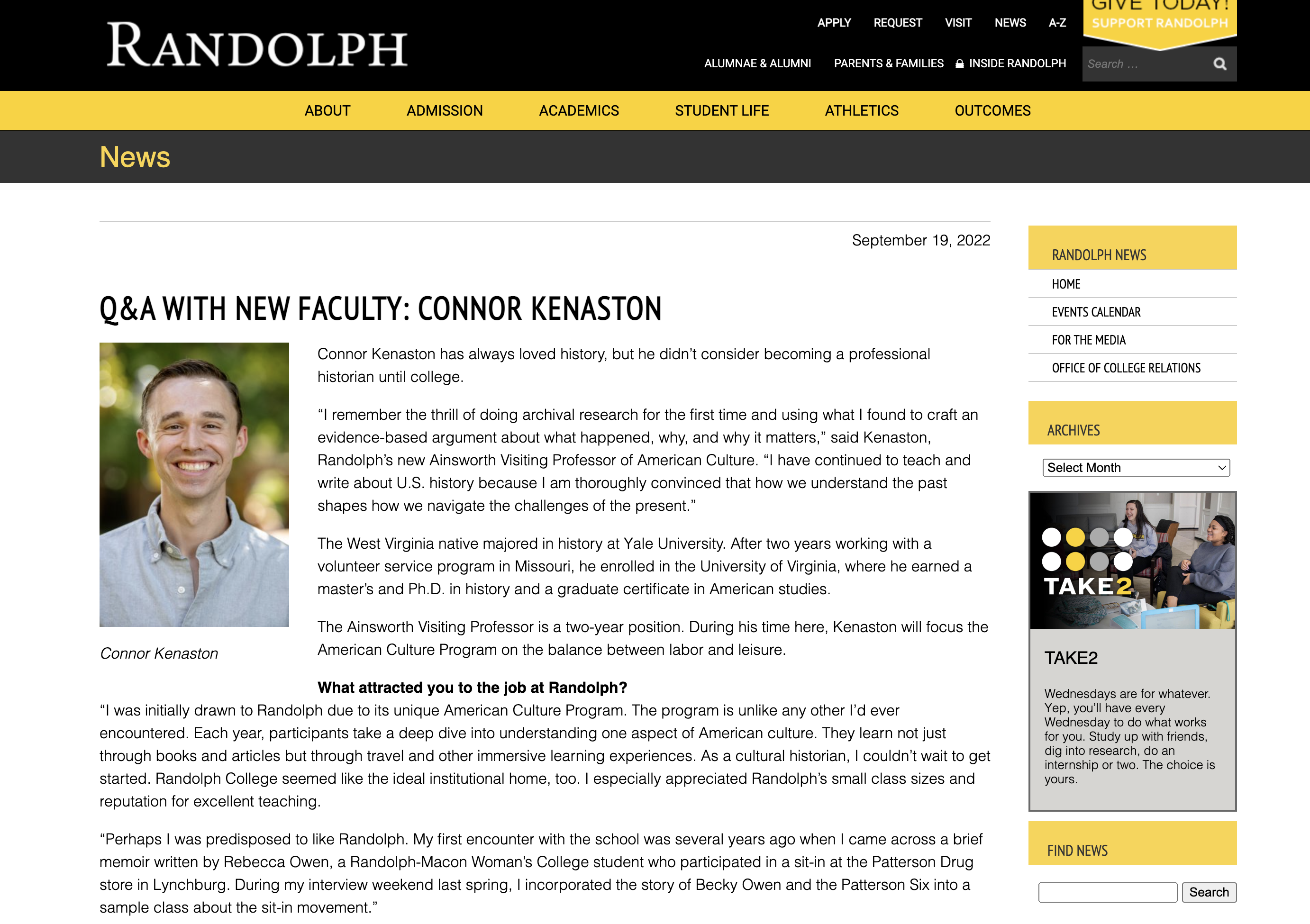Dr. Connor S. Kenaston is an Assistant Professor of History at Randolph College. He is a historian of religion, culture, and politics in the United States. His scholarship focuses on how American Protestants have attempted to shape public life. Dr. Kenaston received his PhD from the University of Virginia in 2022, and his
scholarship has been featured in publications such as Modern American History, Hybrid Pedagogy
and Methodist Review. He is currently working on a book about the history of religious broadcasting, tentatively titled “Spirit of Power: Radio, Religion, and the Sound of the American Century.”
Below you'll find a collection of Kenaston's past blog posts. You can also use the navigation bar to learn more about Kenaston, his research, and his pedagogy.
08 May 2024
Check out this great new article about my time leading the American Culture Program.
Co-leading the American Culture Program has been a blast! The program is unique to Randolph College and is a great example of what makes Randolph special – small classes, experiential learning, and focused on ideas that matter.
For the last two years, we explored the intersection of labor, leisure, and music in the US. We traveled across town in Lynchburg, as well as to Charlottesville, DC, Knoxville, the Highlander Folk School, Memphis, and Nashville and met some amazing labor organizers, activists, musicians, politicians, scholars, and more! We several thought-provoking films, read some excellent books and articles, and had many lively conversations. The theme, “Working for the Weekend,” provided us all with the opportunity to reflect on what we want from our lives and how we can help make the world we want to live in. But it was also a lot of fun – I often described the American Culture Program as an opportunity to design my own “nerd vacation.”
Huge shoutout to my wonderful colleague Julio Rodriguez, our logistics expert Luisa Carrera, and to two great cohorts of students. And a massive thanks to the MANY people who we met with and learned from over the last two years.
You can listen to our collaboratively-created “Working for the Weekend” spotify playlist, review our 2024 syllabus, or see some more pics from our travels on our Insta.
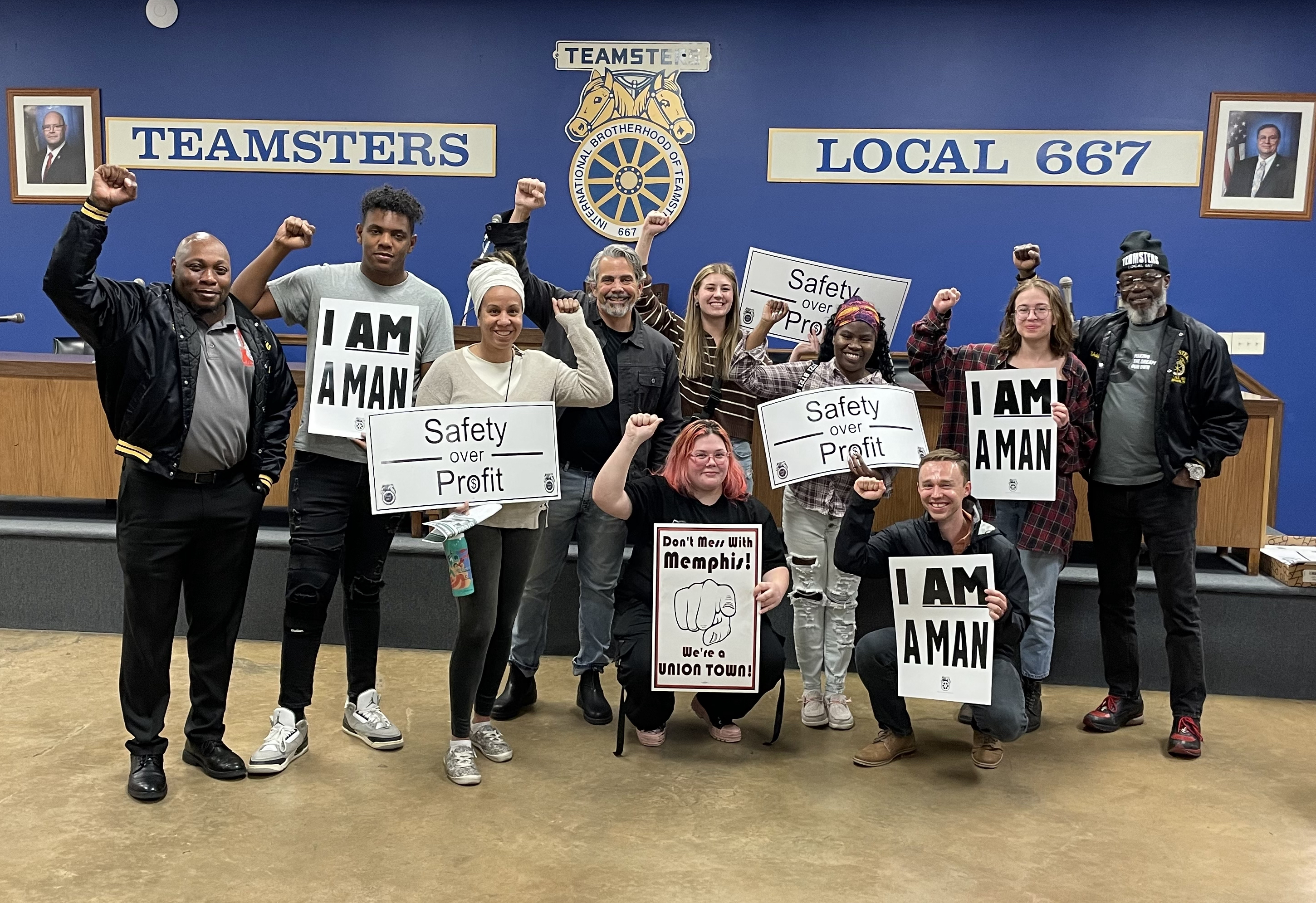
21 Mar 2024
A few years back, I spent a few days at the University of Akron library digging into the Advertising Files of the Goodyear Tire & Rubber Company. I wanted to learn more about “Greatest Story Ever Told,” a religious radio program from the late 1940s and early 1950s that was later made into a TV program and a biblical epic. When Greatest Story emerged in 1947, it differed from all other religious radio programs at that time because it was sponsored by a commercial company.
As I was looking through Goodyear’s records, I came across several speeches and letters where Goodyear officials explained why they thought sponsoring a religious radio program was a good idea for their business. I was struck by how Goodyear used the tools of the advertising industry (eg, case studies, surveys, ratings, etc) along with an interfaith religious advisory committee (kind of like this one from the Coen brothers’Hail Caesar!) to tell the story of the Christian New Testament in a way that appealed to the mass market. As I was looking through the archive, I remember thinking, “Wow! I don’t know how to make sense of this yet, but this is really interesting!” Not long after that archive visit, however, I realized I needed to wrap up my dissertation prior to the start of WWII. So I set my findings on Goodyear and The Greatest Story aside.
I decided to return to those materials this fall, however. I wanted to test the waters to see if I wanted to stretch the timeline of The Big Three into the 1940s. I co-pitched a panel called “The Business of National Patrimony” to be presented at the Business History Conference in Providence, RI. My wonderful co-presenters were Dael Norwood and Whitney Martinko, and we were lucky to have Wendy Woloson as our commeter and Seth Rockman as our panel chair. Shout-out to Dael for doing most of the legwork in regards to getting the panel together!
My paper, “The Greatest Story: Commercial Radio and Religion in the American Century,” argued that Greatest Story Ever Told helped facilitate the rise of an imagined liberal consensus on religion during the Cold Year. At the same time, I also showed how the program’s well-publicizied innovative sponsorship model helped convince the FCC that commercial program could serve the public interest, leading to a foundational 1960 FCC ruling that enabled the rise of televangelism. I received some excellent feedback from both Dr. Woloson and from the audience that will help me revise.
This was my first time attending the Business History Conference, and I really enjoyed it. Special thanks to Randolph College’s Professional Development Committee for supporting my trip to Providence!
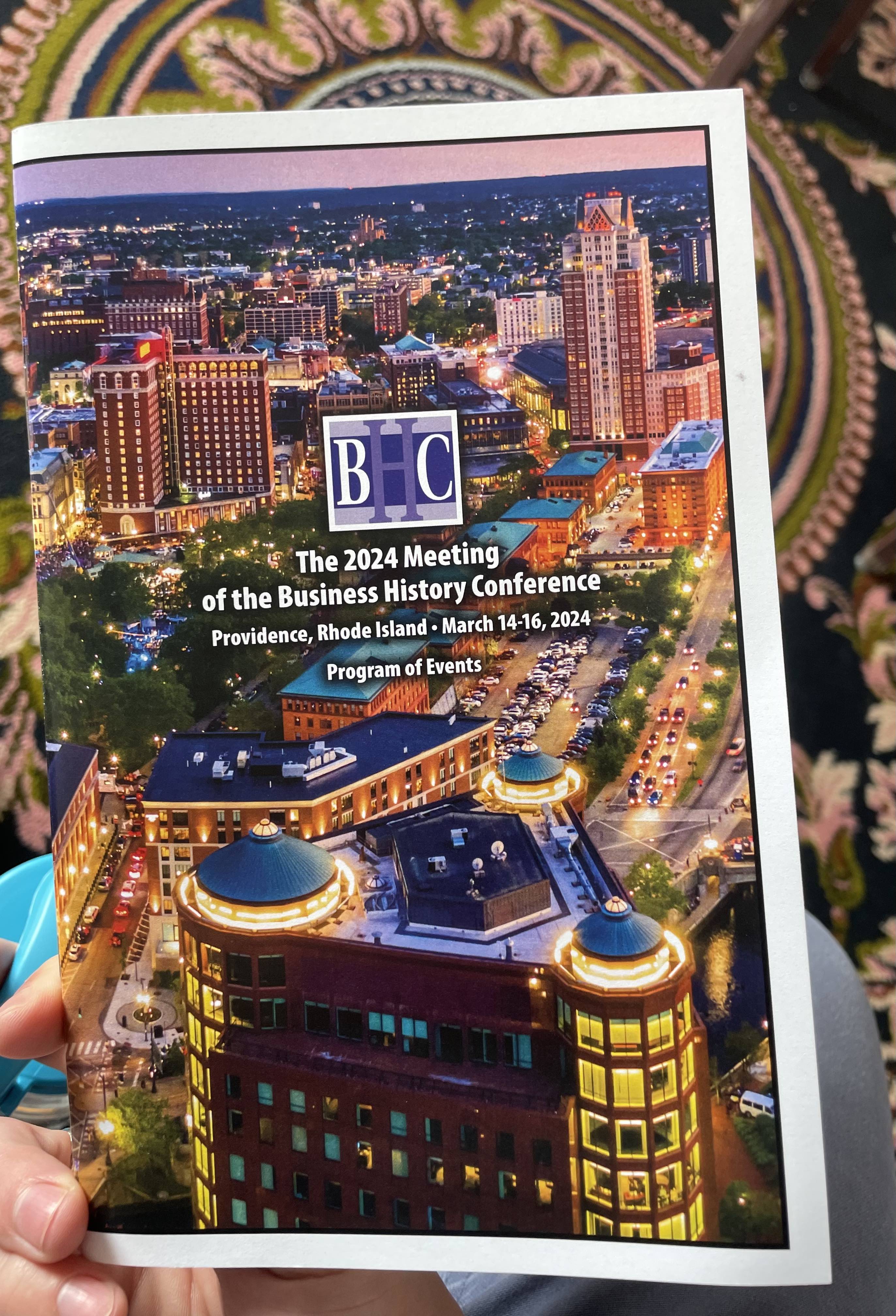
25 Jan 2024
This week, I had the pleasure of hosting my dear friend, Eric Martin, as he talked about some of the ideas in his new book about religious responses the Unite the Right Rally in Charllotesville in 2017. The event went exceedingly well, and I encourage all of you to buy The Writing on the Wall, published by Wipf and Stock publishers.
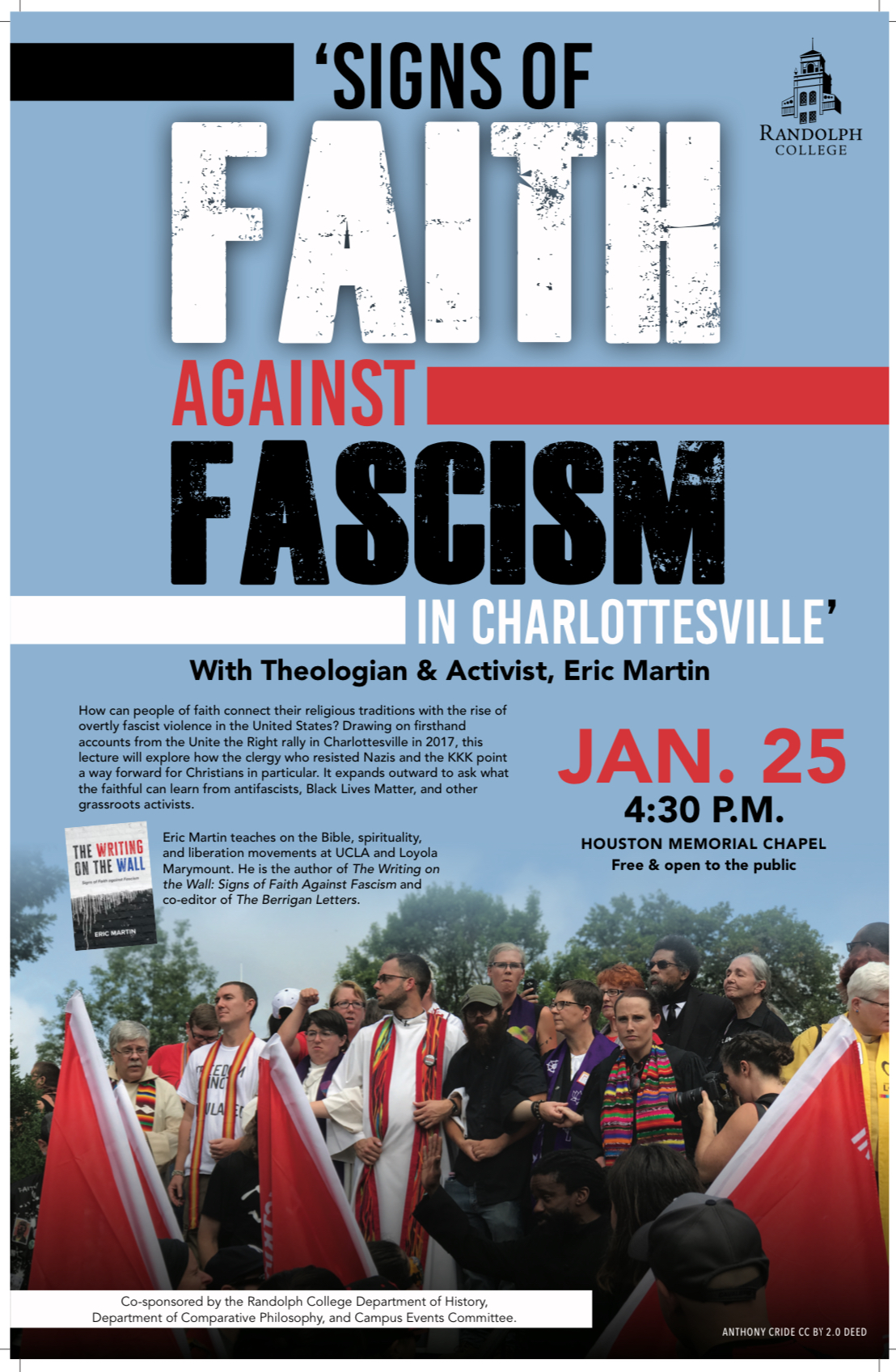
16 Oct 2023
We moved to Lynchburg last summer and have been working hard to find friends and build community ever since. It’s never easy adjusting to a new place, but we’re doing our best! This fall, Livability magazine did a short feature on Maria and me and how we’ve adjusted to our new town.

01 Jul 2023
I’m happy to announce that as of today, I have a new job title: Assistant Professor of History and Ainsworth Scholar in American Culture at Randolph College! This fall Randolph held a national search for a tenure-track position in US and Atlantic history, and thankfully they offered me the job! I will teach in the History Department and co-lead the American Culture program in 2023-2024 before transitioning to full-time in the History Department in 2024-2025.
I have really enjoyed working at Randolph this past year and am looking forward to this next phase. I have loved being back in the classroom, connecting with students, making new friends, and exploring new places with Maria Niechwiadowicz and our pup, Franklin. Moving and transitions are often challenging, and I’m so thankful to the many, many folks near and far who have supported and accompanied us on our journey thus far.

15 Nov 2022
In 2020, I was chosen to receive a $2,500 Research Fellowship grant from the Presbyterian Historical Society. Unfortunately, the Covid-19 pandemic delayed my trip to the archive. Thankfully, I was able to use my research funds to request digital scans that were essential for writing my dissertation. I completed my long-anticipated trip to the archive in January 2022.
This past week, I participated in a panel discussion with other grant recipients to talk about my research and the impact of the PHS fellowship. You can read an article about the event or watch a recording of the event. Perhaps most importantly, be sure to support the Presbyterian Historical Society and other libraries and archives this Giving Tuesday!
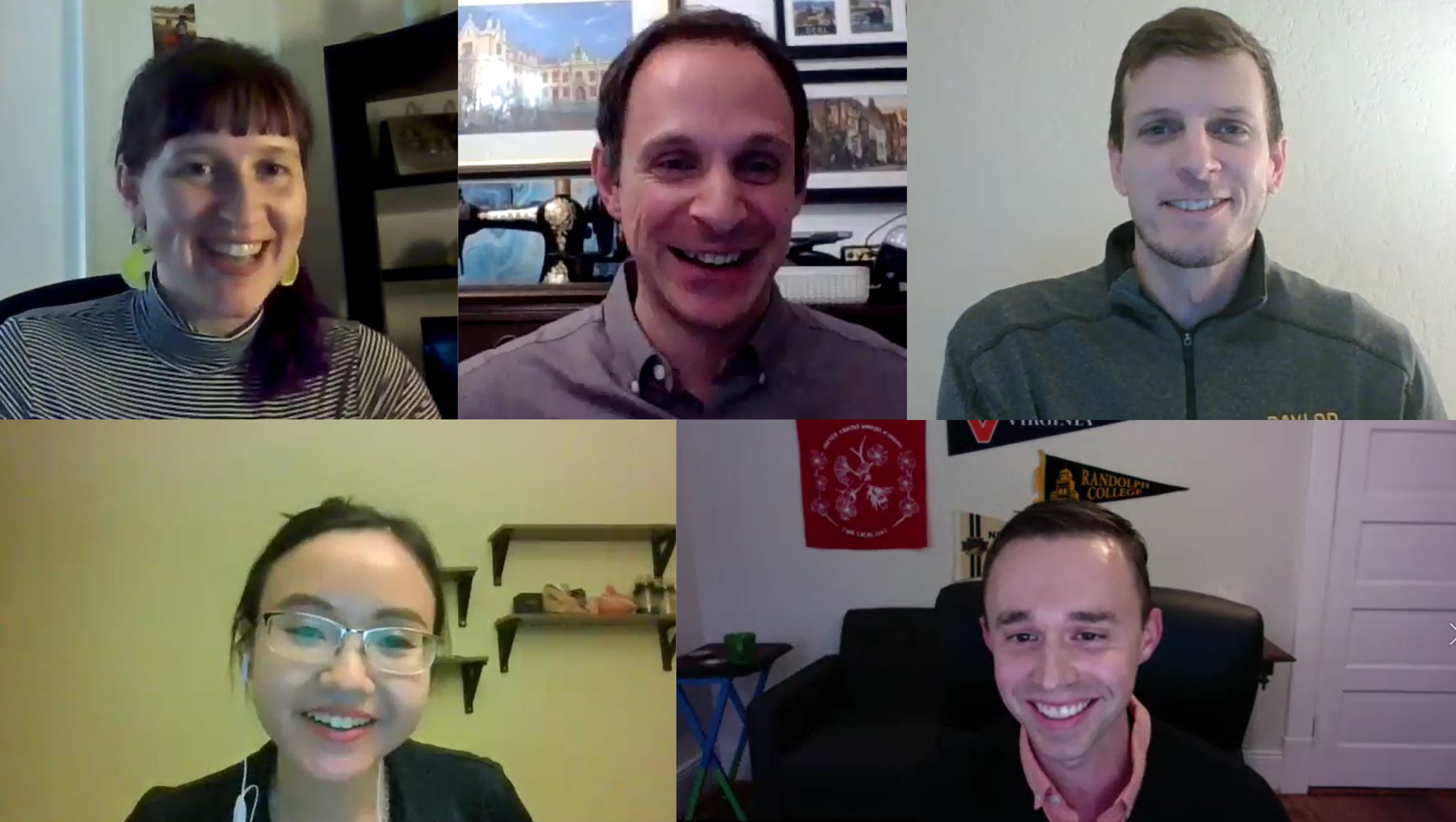
19 Sep 2022
A few weeks ago, I started my new job as the Ainsworth Visiting Assistant Professor of American Culture at Randolph College. You can read more about my new job in this New Faculty Q&A on Randolph’s website.
